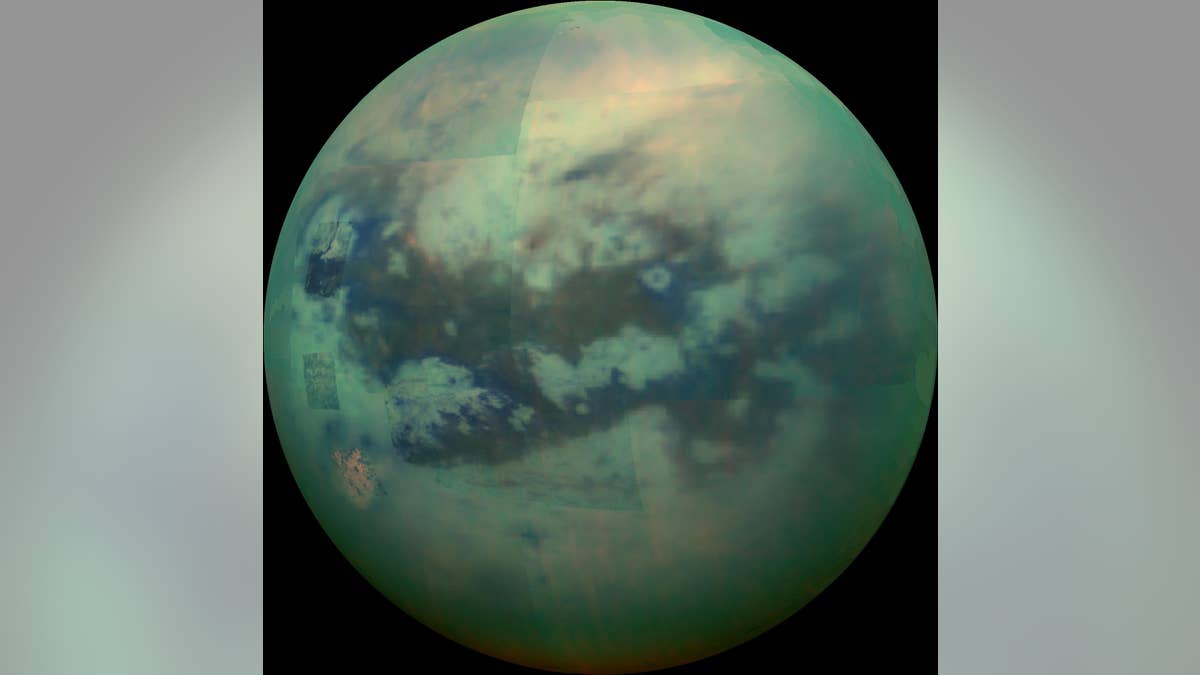
Saturn's moon Titan. (NASA/JPL/University of Arizona/University of Idaho)
NASA’s Cassini spacecraft has managed to penetrate the haze of Saturn’s moon Titan, revealing a world basking in blues, greens and even reds.
During this Titan flyby in November, the spacecraft's closest-approach altitude was 6,200 miles. That is considerably higher than those of typical flybys, which are around 750 miles. The view looks toward terrain that is mostly on the Saturn-facing hemisphere of Titan and features the parallel, dark, dune-filled regions named Fensal (to the north) and Aztlan (to the south), which form the shape of a sideways letter "H."
Related: Giant dunes on Saturn's moon Titan sculpted by rogue winds
Due to the changing Saturnian seasons, in this late northern spring view, the illumination is much different than what was seen by VIMS during the "T-9" flyby on December 26, 2005. The sun has moved higher in the sky in Titan's northern hemisphere, and lower in the sky in the south, as northern summer approaches. This change in the sun's angle has made high southern latitudes appear darker, while northern latitudes appear brighter.
Related: Saturn's Moon Titan Ready for Its Close-Up
The Cassini mission, a cooperative project of NASA, the European Space Agency and the Italian Space Agency, launched in 1997 and arrived in orbit around Saturn in July 2004. The mission — centered on understanding Saturn and its many moons — is expected to continue until 2017 when the spacecraft will be crashed into Saturn's atmosphere.




















